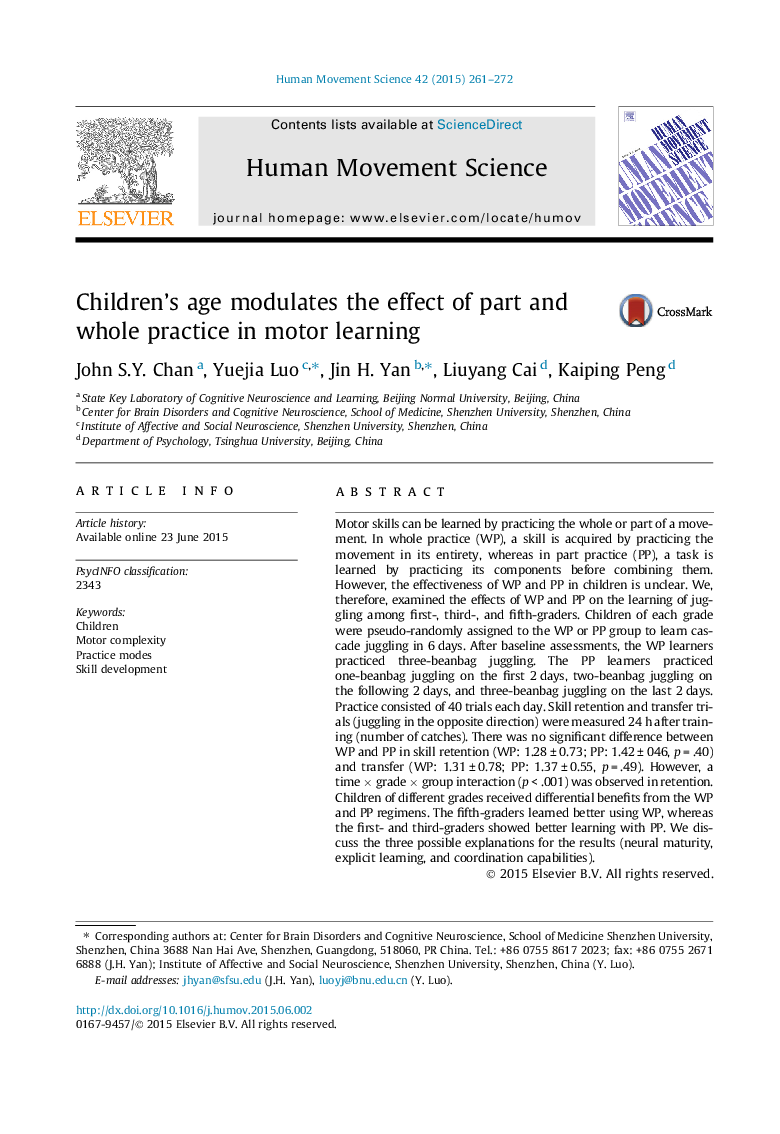| Article ID | Journal | Published Year | Pages | File Type |
|---|---|---|---|---|
| 928246 | Human Movement Science | 2015 | 12 Pages |
•5th-graders had greater improvements with whole practice.•1st- and 3rd-graders had greater improvements with part practice.•Neural maturity, cognitive ability and motor competence may explain the results.
Motor skills can be learned by practicing the whole or part of a movement. In whole practice (WP), a skill is acquired by practicing the movement in its entirety, whereas in part practice (PP), a task is learned by practicing its components before combining them. However, the effectiveness of WP and PP in children is unclear. We, therefore, examined the effects of WP and PP on the learning of juggling among first-, third-, and fifth-graders. Children of each grade were pseudo-randomly assigned to the WP or PP group to learn cascade juggling in 6 days. After baseline assessments, the WP learners practiced three-beanbag juggling. The PP learners practiced one-beanbag juggling on the first 2 days, two-beanbag juggling on the following 2 days, and three-beanbag juggling on the last 2 days. Practice consisted of 40 trials each day. Skill retention and transfer trials (juggling in the opposite direction) were measured 24 h after training (number of catches). There was no significant difference between WP and PP in skill retention (WP: 1.28 ± 0.73; PP: 1.42 ± 046, p = .40) and transfer (WP: 1.31 ± 0.78; PP: 1.37 ± 0.55, p = .49). However, a time × grade × group interaction (p < .001) was observed in retention. Children of different grades received differential benefits from the WP and PP regimens. The fifth-graders learned better using WP, whereas the first- and third-graders showed better learning with PP. We discuss the three possible explanations for the results (neural maturity, explicit learning, and coordination capabilities).
